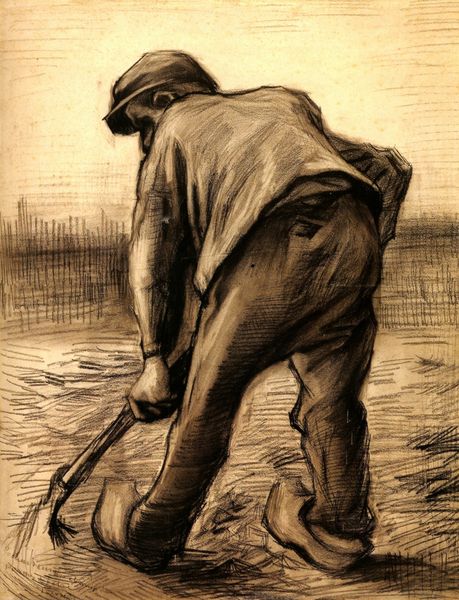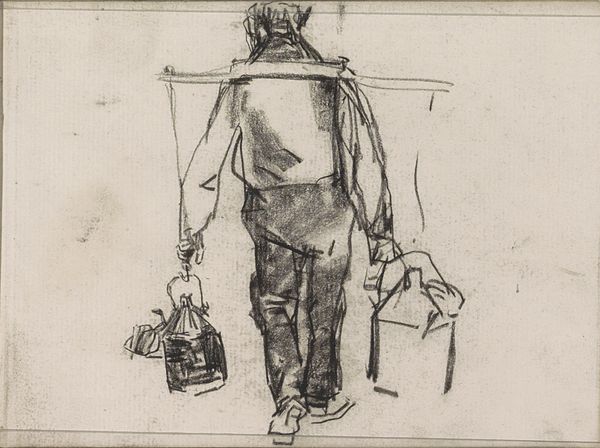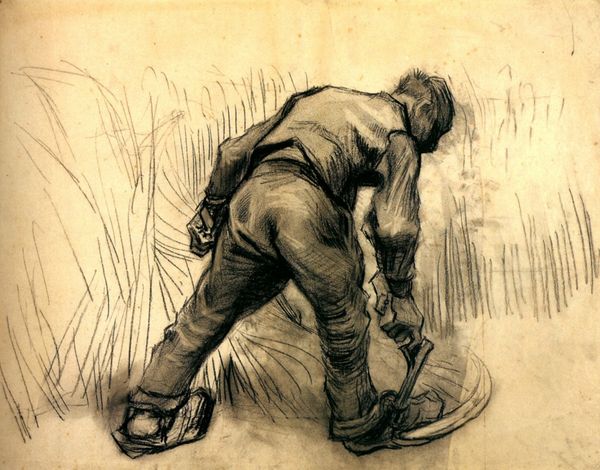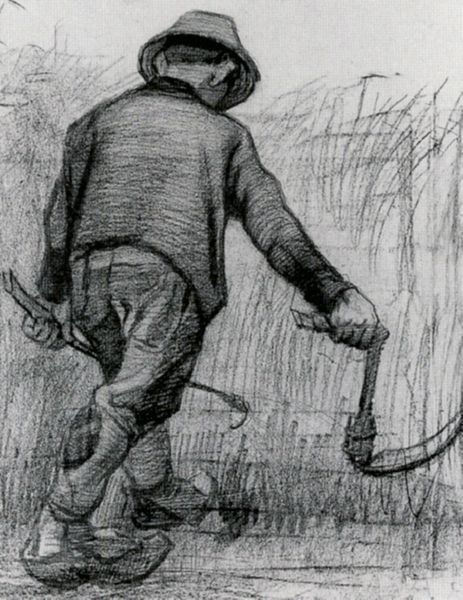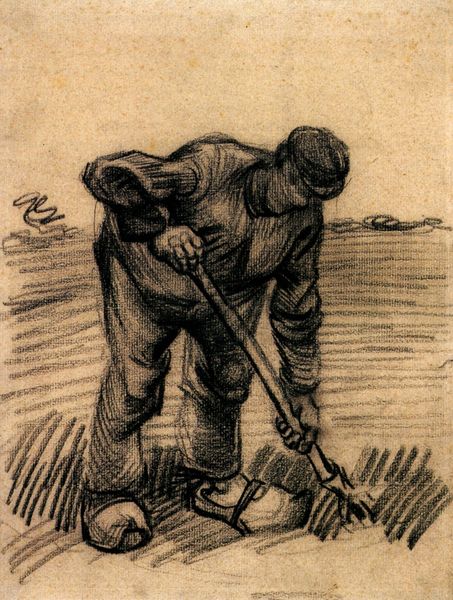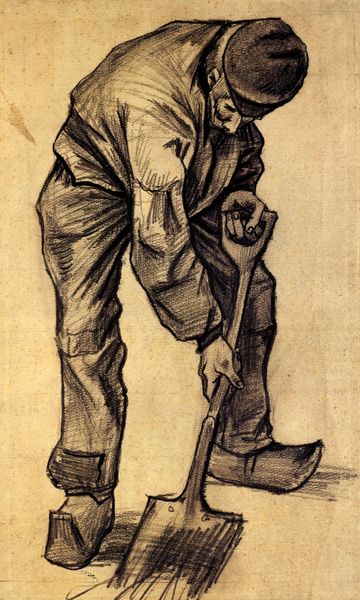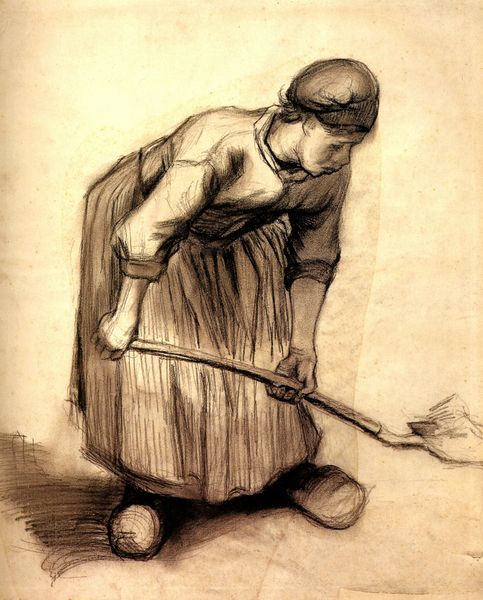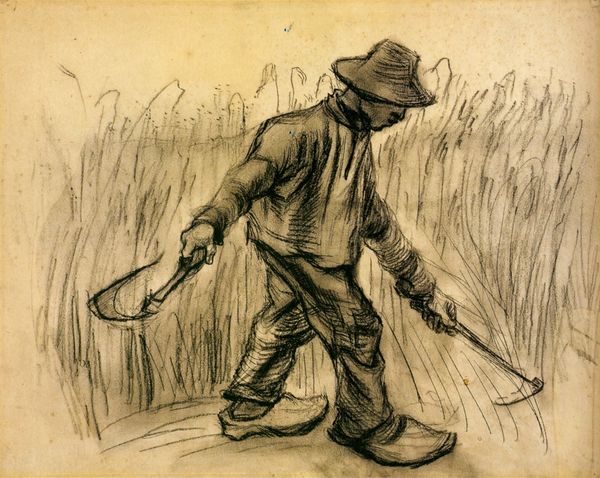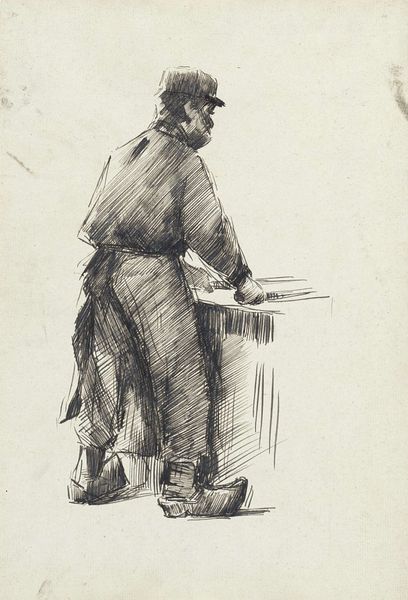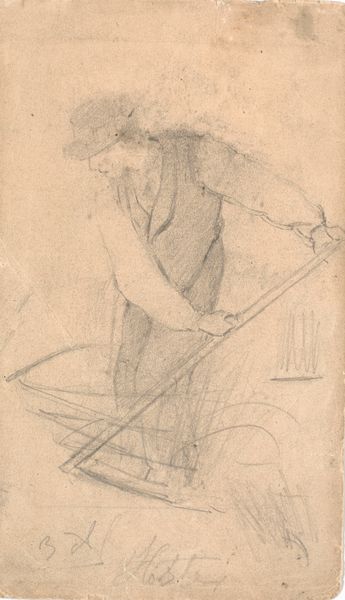
drawing, charcoal
#
portrait
#
drawing
#
charcoal drawing
#
genre-painting
#
charcoal
#
post-impressionism
#
realism
Copyright: Public domain
Curator: Van Gogh's "Reaper," a charcoal drawing completed in 1885, showcases a figure bending deeply, poised with a tool. A somber air settles as we contemplate the monochromatic medium. Editor: Yes, the first impression is undoubtedly one of heavy labor, isn’t it? The hunched posture and the weight of the implement… It all conveys a palpable sense of burden and speaks to the broader issues of social realism prevalent during that era. Curator: Absolutely. Consider how the artist has used contour lines. The weight, it seems, is not solely literal but structural, built in with each calculated stroke. This figure dominates the frame, a solid shape forged of lines and form. Editor: It is impossible to divorce this from its time. Van Gogh was clearly interested in conveying the harsh realities of rural life and working-class struggles through imagery of peasant existence. Notice how he captures not just the physicality of labor, but also its emotional weight. Curator: Note the subtle shift in pressure with each charcoal line, generating the very illusion of a worker weighed down, bowed against an unseen but implicit hardship, isn’t it? And the barest implication of landscape serves only to place our lone worker. Editor: Precisely! Van Gogh's focus was on everyday working figures and revealing their personal stories during times of significant social stratification. These images were rarely devoid of a pointed, implicit statement. What kind of world lets the working person get so worn out? Curator: Thus, the power resides within the inherent visual dynamic and the very visible process of rendering. We sense the very essence of laborious motion rendered with exceptional technical skill in black and white. The artist creates an essential study of form while alluding to narratives beyond itself. Editor: He draws attention to the silent narratives etched into working class lives, asking the viewer to confront their significance beyond the artistic form itself. He asks us to reconsider the values inherent in society and to challenge our complicity through imagery that demands attention. Curator: Looking carefully, then, reveals the potent relationship between structural artistry and implicit expression and Van Gogh’s keen understanding of line, shade, and composition to represent emotional, economic, and societal burden. Editor: Precisely, it pushes us to question and see what’s truly beneath the surface. And within this charcoal work from Van Gogh, we find that complexity layered upon somber observation, revealing uncomfortable truths.
Comments
No comments
Be the first to comment and join the conversation on the ultimate creative platform.


